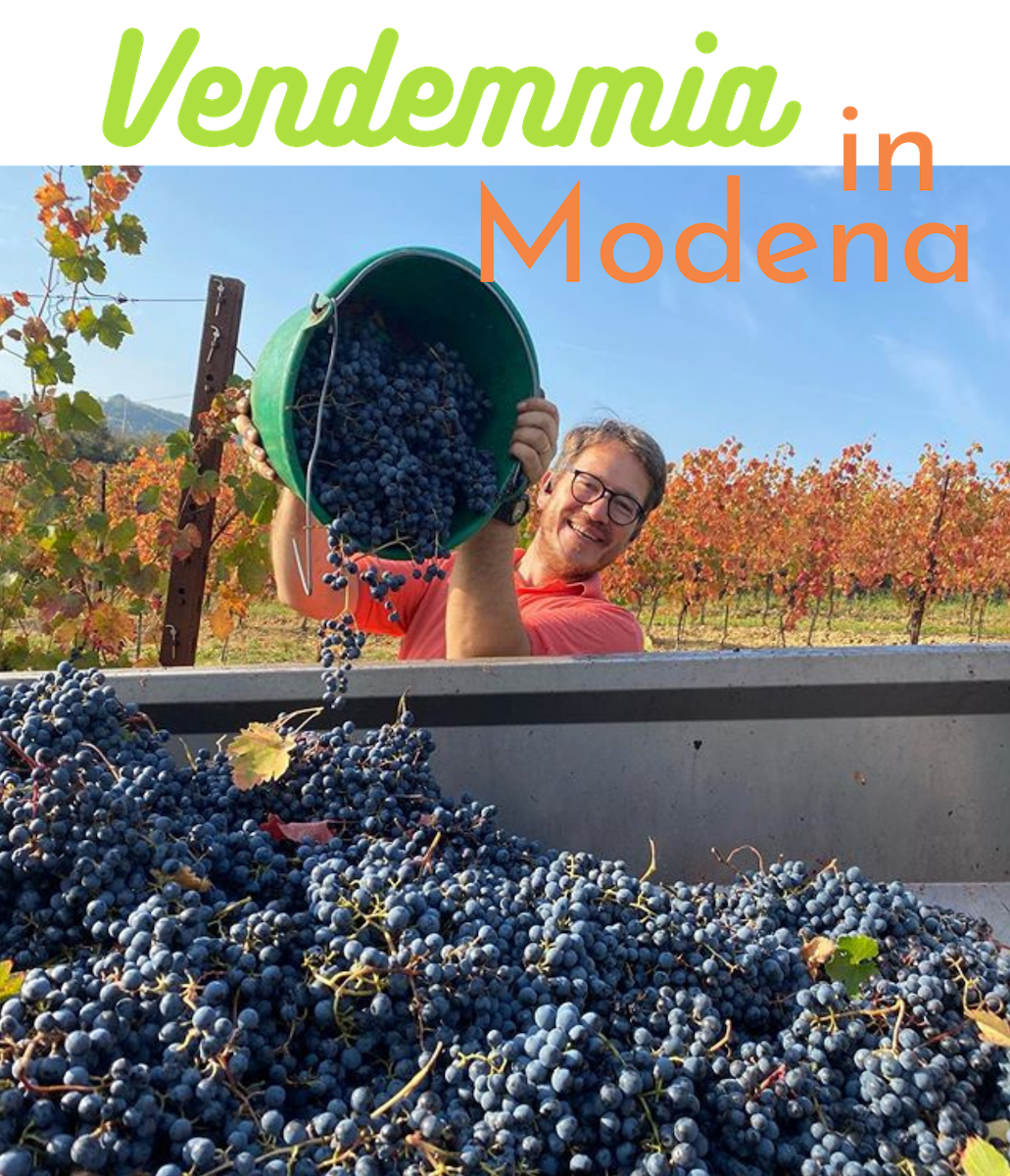September and October in Italy are vendemmia time, grape harvest season. This year in Modena, Emilia Romagna the vendemmia was phenomenal. The grapes were plump, healthy, and perfectly sugary; exactly the right kind of grapes for making the best balsamic vinegar. For this year’s vendemmia we had a detailed balsamic reportage by our friend Viola Buitoni. She spent some very exciting days with sister and brother team, Mariangela and Michele of La Cà dal Non, learning everything about local grape varieties, organic agriculture, and REAL balsamic vinegar making.
![]()
Mariangela and Michele are not just vinegar makers, they’re also farmers. They grow all their grapes organically and use them as THE ONE ingredient in their line of farm to bottle Balsamic Vinegars.
![]()
Lambrusco Grasparossa red grapes as well as Pignoletto and Trebbiano Modenese white grapes are the most typical varieties in Modena.
![]()
At La Cà dal Non, the grapes are gently pressed into must and cooked in open vats for 2 days.
![]()
The cooked grape must is naturally turned into vinegar through natural fermentation and subsequent vinegar natural transformation.
![]()
Aging is the key factor for creating those deep Balsamic flavors. From a minimum of 3 years, for the simplest Balsamic Condiment, to a max of 25 years, for the Extra Old Traditional Balsamic Vinegar, the wood, oxidation, and unique environment of the acetaia transform the simple grape juice into a complex and aromatic aceto balsamico.



